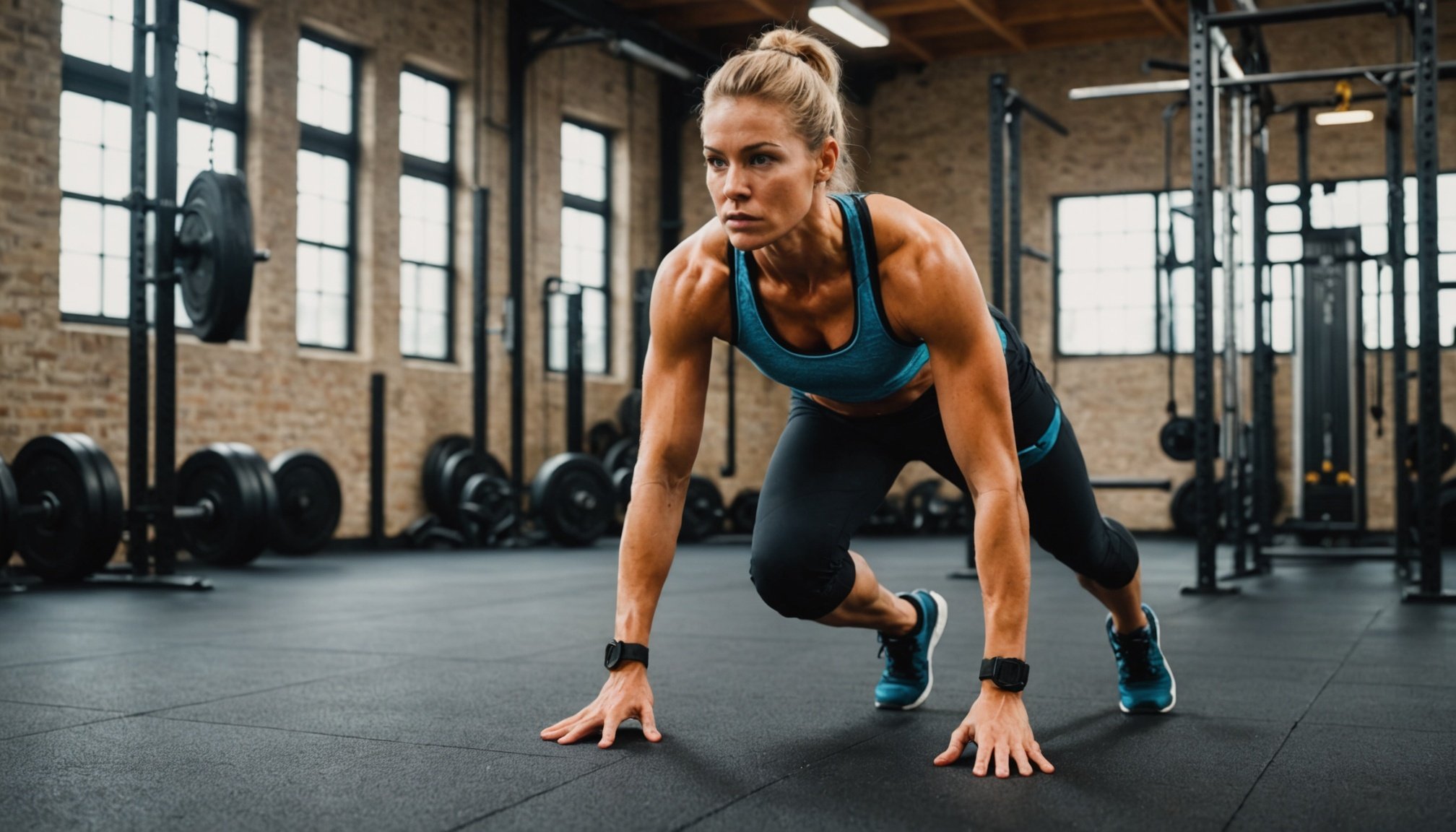Unlock Your Fitness Potential: Discover the Advantages of Adding Functional Training to Your Workout Regimen
In the pursuit of a healthier, more robust body, many of us find ourselves stuck in a routine that, while effective, may not be preparing us for the demands of everyday life. This is where functional training comes into play, offering a holistic approach to fitness that enhances your strength, stability, and overall well-being. Here’s a deep dive into the benefits and practical applications of incorporating functional training into your workout regimen.
What is Functional Training?
Functional training is an approach to exercise that focuses on movements and exercises that mimic the activities you perform in your daily life. Unlike traditional strength training, which often isolates specific muscle groups, functional training engages multiple muscle groups simultaneously, improving your balance, coordination, and overall functional strength.
This might interest you : Unlocking Mental Wellness: The Surprising Advantages of Cultivating Gratitude
“Functional training is about preparing your body for the real world,” says a fitness enthusiast who has seen significant improvements in their daily activities after incorporating functional exercises into their routine. “It’s not just about lifting weights; it’s about being able to carry groceries, play with your kids, or even just walk up the stairs without getting winded.”
Benefits of Functional Training
Enhanced Strength and Stability
Functional training is designed to improve your functional strength, which is the ability to use your strength in real-life situations. By engaging your core and multiple muscle groups, these exercises enhance your stability and balance, reducing the risk of injuries.
Also to discover : Unlocking Mental Wellness: Harnessing the Power of Journaling for Emotional Growth
For example, exercises like squats, lunges, and step-ups are not just about building leg strength; they also improve your balance and stability, making everyday activities like walking or climbing stairs much easier.
Improved Coordination and Balance
Functional training often involves complex movements that require coordination and balance. This not only improves your physical abilities but also enhances your cognitive function by challenging your brain to coordinate different muscle groups.
“Since I started doing functional training, I’ve noticed a significant improvement in my coordination and balance,” notes another fitness enthusiast. “I can now perform tasks that require multitasking, like carrying multiple bags while walking, with much more ease.”
Better Preparation for Daily Activities
One of the most significant advantages of functional training is its ability to prepare your body for the demands of daily life. Whether it’s lifting heavy objects, bending to pick up something, or simply maintaining good posture, functional exercises make you more capable and resilient.
Here are some key benefits of functional training in relation to daily activities:
- Improved Posture: Functional exercises that engage your core and back muscles help maintain good posture, reducing the risk of back pain and other musculoskeletal issues.
- Enhanced Mobility: By improving your flexibility and range of motion, functional training makes it easier to perform tasks that require bending, twisting, or reaching.
- Increased Endurance: Functional workouts often involve high-intensity interval training (HIIT) or low-intensity steady state (LISS) exercises, which improve your cardiovascular endurance and overall fitness.
Types of Functional Training Exercises
Functional training encompasses a wide range of exercises and activities. Here are some examples:
Bodyweight Exercises
- Squats: Works the legs, glutes, and core.
- Lunges: Targets the legs, glutes, and core.
- Push-ups: Engages the chest, shoulders, and triceps.
- Pull-ups: Works the back, shoulders, and arms.
Functional Strength Training
- Kettlebell Swings: Engages the entire body, improving strength and endurance.
- Box Jumps: Improves explosive power and leg strength.
- Battle Ropes: Works the arms, shoulders, and core.
Cardiovascular Exercises
- High-Intensity Interval Training (HIIT): Involves short bursts of high-intensity exercise followed by brief periods of rest. For example, the 30-30 method, where you perform 30 seconds of intense effort followed by 30 seconds of recovery[1].
- Low-Intensity Steady State (LISS): Involves longer periods of low-intensity exercise, such as jogging, cycling, or swimming[4].
How to Incorporate Functional Training into Your Workout Regimen
Incorporating functional training into your workout routine can be straightforward and rewarding. Here are some practical steps to get you started:
Start with Bodyweight Exercises
Begin with basic bodyweight exercises like squats, lunges, and push-ups. These exercises are easy to learn and can be done anywhere, making them a great starting point.
Incorporate Functional Strength Training
Once you’re comfortable with bodyweight exercises, introduce functional strength training using tools like kettlebells, resistance bands, or even household objects.
Add Cardiovascular Exercises
Incorporate HIIT or LISS exercises into your routine. For example, you can use the 30-30 method for HIIT or go for a 30-minute jog or bike ride for LISS.
Sample Workout Routine
Here’s a sample workout routine that incorporates functional training:
| Day | Exercise | Description |
|---|---|---|
| Monday | Squats | 3 sets of 12 reps |
| Lunges | 3 sets of 12 reps (per leg) | |
| Push-ups | 3 sets of 12 reps | |
| Tuesday | Kettlebell Swings | 3 sets of 12 reps |
| Box Jumps | 3 sets of 12 reps | |
| Battle Ropes | 3 sets of 12 reps | |
| Wednesday | Rest | – |
| Thursday | HIIT (30-30 method) | 30 seconds of burpees followed by 30 seconds of rest |
| Repeat for 20 minutes | ||
| Friday | LISS (Jogging) | 30 minutes at moderate intensity |
| Saturday | Rest | – |
| Sunday | Functional Strength Training | Focus on different muscle groups |
Real-Life Examples and Anecdotes
Many people have seen significant improvements in their fitness and daily life after incorporating functional training into their routines.
“For me, the biggest change was in my ability to play with my kids without getting tired,” says a parent who started functional training. “I can now run around with them, lift them up, and even carry them on my shoulders without feeling exhausted.”
Another example is from someone who works in construction: “Since I started doing functional training, I’ve noticed a huge difference in my ability to perform my job. I can lift heavy materials, climb ladders, and work for longer periods without feeling fatigued.”
Practical Insights and Actionable Advice
Here are some practical insights and actionable advice to help you get the most out of your functional training:
Listen to Your Body
- Always warm up before starting any workout.
- Start with lower intensities and gradually increase as your body adapts.
- Rest when needed; recovery is as important as the workout itself.
Mix It Up
- Vary your exercises to avoid plateaus and prevent overuse injuries.
- Incorporate different types of functional training, such as bodyweight exercises, strength training, and cardiovascular exercises.
Make It Fun
- Find activities you enjoy, whether it’s swimming, cycling, or even dancing.
- Work out with friends or family to make the experience more enjoyable and to stay motivated.
Incorporating functional training into your workout regimen can have a profound impact on your overall fitness and daily life. By focusing on exercises that mimic real-life movements, you enhance your strength, stability, and coordination, making you more capable and resilient.
As one fitness enthusiast aptly put it, “Functional training is not just about working out; it’s about living a better life. It’s about being able to do what you want, when you want, without limitations.”
So why not give it a try? Your body—and your daily life—will thank you.











